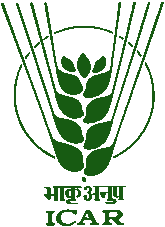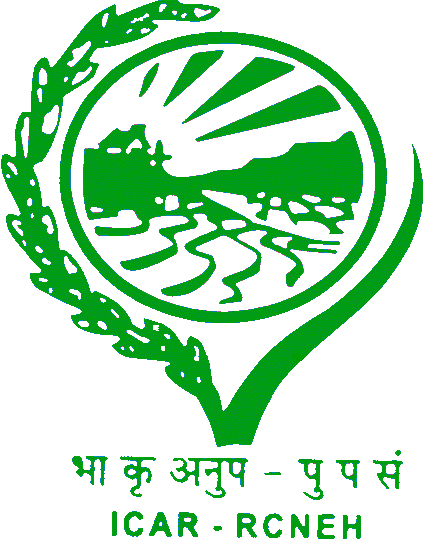
Agro Advisory Service

Integrated Agro Advisory Service (IAAS) rendered by India Meteorological Department (IMD), Ministry of Earth Sciences (MoES) is a mechanism to apply relevant meteorological information to help the farmer make the most efficient use of natural resources, with the aim of improving agricultural production, both in quality and quantity and to minimize the impact of adverse weather on crops and to make use of favorable weather to boost agricultural production.
Weather services provide a very special kind of inputs to the farmer as advisories that can make a tremendous difference to the agriculture production. India Meteorological Department (IMD) has started issuing quantitative district level weather forecast upto five days (medium range weather forecast). Products comprising quantitative forecasts for eight weather parameters viz., rainfall(mm), maximum temperature(ºC), minimum temperature(ºC), cloud cover (okta) maximum relative humidity(%), minimum relative humidity(%), wind direction and wind speed(kmph).
Based on the weather predictions, the IAAS bulletins are prepared and delivered by AMFUs twice in a week around the year. IAAS bulletins contain the possible risk mitigation steps for all the weather sensitive agricultural operations besides weather based risk mitigation measures on crop cultivation and livestock production. It is prepared by considering information about weather prediction and existing crop/livestock condition. Advisory content varied with location, season, weather, crop condition, and local management practices. The advisories also served as an early warning function, alerting producers to the implications of various weather events such as extreme temperatures, heavy rains, floods, and strong winds etc.
Medium range weather forecast is required for the following operations:-
1) Management of labour and farm equipments
2) To decide about the sowing time of a crop
3) To determine the sowing depth of the seeds, so that normal seedling emergence rate may be maintained with the available moisture
4) To plan irrigation by taking into consideration the amount of expected rainfall
5) To achieve maximum efficiency of spray application
6) To decide about the harvesting of a crop
7) The upkeep of livestock can be made effectively by taking into account the expected heat and cold wave conditions.
In order to provide direct services to the farming community of our state, Agro Meteorological Field Unit (AMFU) ICAR, Nagaland centre Medziphema. under the umbrella of India Meteorological Department (IMD) Pune has been issuing the district wise Integrated Agro Advisory Bulletins based on the above forecast and the crop information available from districts. Integrated Agro Advisory Bulletins are being disseminated to different departments, KVKs’, ATMAs’, AIR, Doordashan and NGOs’ to reach the farming community at different locations of the state. Agromet bulletins include significant past weather, quantitative weather forecast for the next five days and specific advice on field crops, horticultural crops and livestock etc. which farmers need to act upon. Its frequency is twice a week i.e Tuesday and Friday. It is thus possible for the farmers to plan agricultural operation so as to take advantage of the favorable weather and mitigate the effects of adverse weather.
Weather services provide a very special kind of inputs to the farmer as advisories that can make a tremendous difference to the agriculture production. India Meteorological Department (IMD) has started issuing quantitative district level weather forecast upto five days (medium range weather forecast). Products comprising quantitative forecasts for eight weather parameters viz., rainfall(mm), maximum temperature(ºC), minimum temperature(ºC), cloud cover (okta) maximum relative humidity(%), minimum relative humidity(%), wind direction and wind speed(kmph).
Based on the weather predictions, the IAAS bulletins are prepared and delivered by AMFUs twice in a week around the year. IAAS bulletins contain the possible risk mitigation steps for all the weather sensitive agricultural operations besides weather based risk mitigation measures on crop cultivation and livestock production. It is prepared by considering information about weather prediction and existing crop/livestock condition. Advisory content varied with location, season, weather, crop condition, and local management practices. The advisories also served as an early warning function, alerting producers to the implications of various weather events such as extreme temperatures, heavy rains, floods, and strong winds etc.
Medium range weather forecast is required for the following operations:-
1) Management of labour and farm equipments
2) To decide about the sowing time of a crop
3) To determine the sowing depth of the seeds, so that normal seedling emergence rate may be maintained with the available moisture
4) To plan irrigation by taking into consideration the amount of expected rainfall
5) To achieve maximum efficiency of spray application
6) To decide about the harvesting of a crop
7) The upkeep of livestock can be made effectively by taking into account the expected heat and cold wave conditions.
In order to provide direct services to the farming community of our state, Agro Meteorological Field Unit (AMFU) ICAR, Nagaland centre Medziphema. under the umbrella of India Meteorological Department (IMD) Pune has been issuing the district wise Integrated Agro Advisory Bulletins based on the above forecast and the crop information available from districts. Integrated Agro Advisory Bulletins are being disseminated to different departments, KVKs’, ATMAs’, AIR, Doordashan and NGOs’ to reach the farming community at different locations of the state. Agromet bulletins include significant past weather, quantitative weather forecast for the next five days and specific advice on field crops, horticultural crops and livestock etc. which farmers need to act upon. Its frequency is twice a week i.e Tuesday and Friday. It is thus possible for the farmers to plan agricultural operation so as to take advantage of the favorable weather and mitigate the effects of adverse weather.



